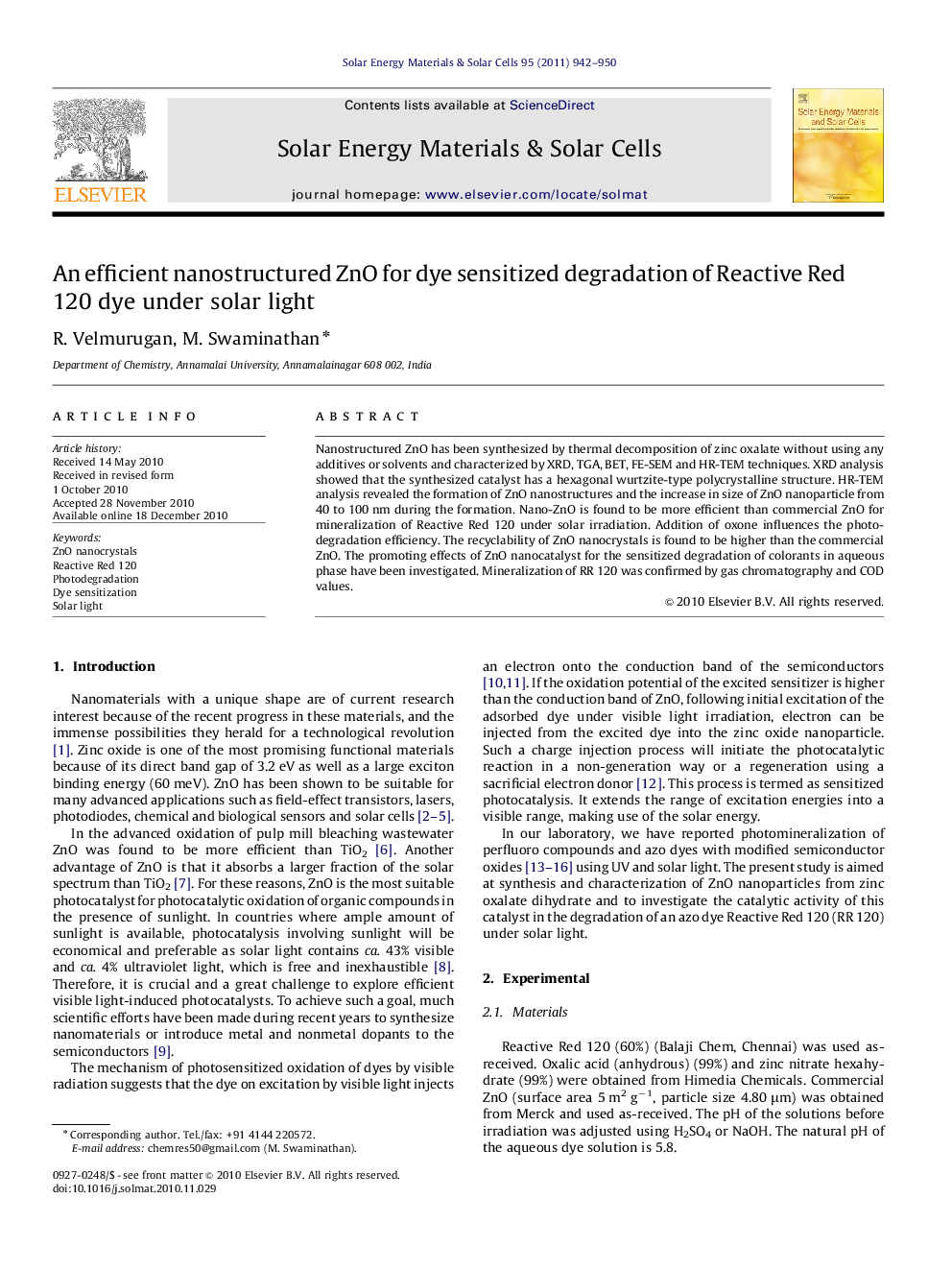| Article ID | Journal | Published Year | Pages | File Type |
|---|---|---|---|---|
| 79775 | Solar Energy Materials and Solar Cells | 2011 | 9 Pages |
Nanostructured ZnO has been synthesized by thermal decomposition of zinc oxalate without using any additives or solvents and characterized by XRD, TGA, BET, FE-SEM and HR-TEM techniques. XRD analysis showed that the synthesized catalyst has a hexagonal wurtzite-type polycrystalline structure. HR-TEM analysis revealed the formation of ZnO nanostructures and the increase in size of ZnO nanoparticle from 40 to 100 nm during the formation. Nano-ZnO is found to be more efficient than commercial ZnO for mineralization of Reactive Red 120 under solar irradiation. Addition of oxone influences the photodegradation efficiency. The recyclability of ZnO nanocrystals is found to be higher than the commercial ZnO. The promoting effects of ZnO nanocatalyst for the sensitized degradation of colorants in aqueous phase have been investigated. Mineralization of RR 120 was confirmed by gas chromatography and COD values.
Graphical AbstractHigher efficiency of ZnO nanocrystals in solar light is due to the presence of dye sensitized mechanism along with the usual ZnO sensitization. Transfer of electron from solar light sensitized dye molecule to the conduction band of nano-ZnO increases the generation of oxide ion radicals and dye degradation.Figure optionsDownload full-size imageDownload as PowerPoint slide
